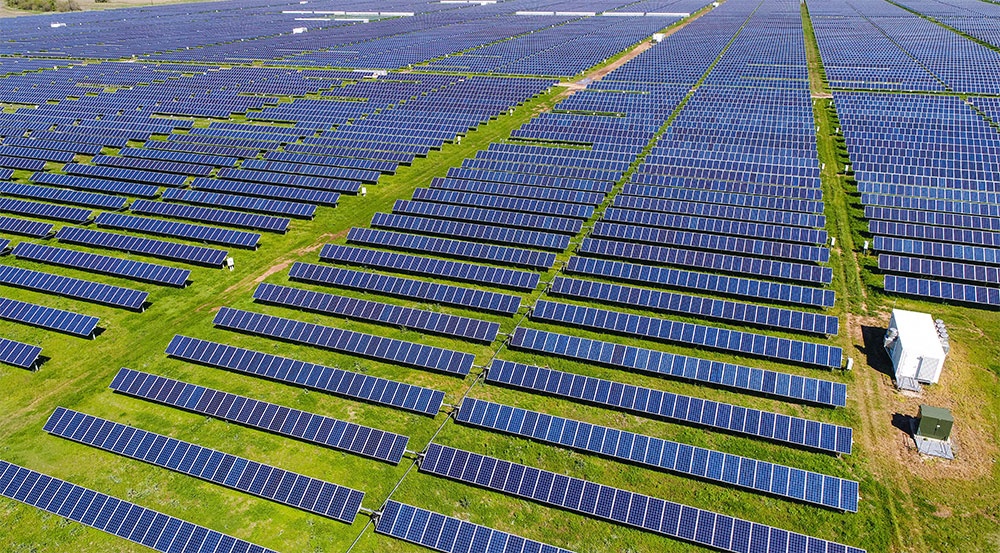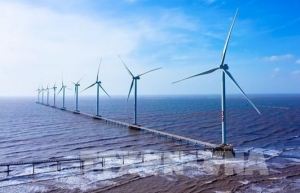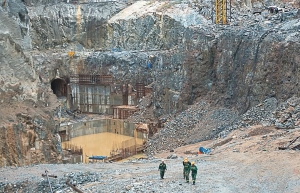Coal groups contend with new era
 |
| Switching from coal and using sources like solar is crucial, but ongoing events are making it tough, Photo: Shutterstock |
As mining outputs decline, reserves plummet, and imports face difficulties which could impact coal supply for power generation in Vietnam in 2023, the country’s energy transition remains a huge challenge, particularly since coal-fired power is still one of the main sources of electricity.
Coc Sau Coal JSC is approaching the mining depth of 300m, the deepest level in open pit mines in Cam Pha area of the northeastern province of Quang Ninh.
Tran Son Ha, deputy director of Coc Sau, said, “Coal output and quality were affected by the increasing depth of exploitation and limited field size. Coal production and processing output of Coc Sau in the first nine months of 2022 only reached about half of the planned three million tonnes.”
In Cam Pha, besides Coc Sau, other open-pit coal mines such as Cao Son Coal, Deo Nai, and Southwest Da Mai, are also speeding up lowering pits for coal. Coal output of these four companies accounts for nearly a quarter of the total raw coal output of Vietnam National Coal and Mineral Industries Group (Vinacomin).
Currently, the open-pit coal mines of Vinacomin are continuing to exploit deeply, at an average depth of 10-15m per year.
Open-pit mining continues to play an important role in the total coal output of Vinacomin in 2023, as the output of each mine is expected to reach 1.5-4 million tonnes of coal per year.
However in December, Vinacomin only supplied about 1.27 million tonnes of coal, too low for the targeted 10 million tonnes of coal in the fourth quarter.
Ngo Son Hai, deputy general director of Electricity of Vietnam (EVN), said at a meeting with Vinacomin in December, “Low coal inventory will directly affect the ability to generate power at Thai Binh 1, Nghi Son 1, Haiphong, and Vinh Tan 2 thermal power plants, especially with the high demand in the past six months.”
At the beginning of 2023, Vinacomin estimated its coal inventory to be around 1.5 million tonnes, much lower than the same period last year.
According to the company’s calculations of the coal supply capacity for electricity in 2023, the total volume would amount to 45.89 million tonnes of coal. Particularly for the thermal power plants of EVN, the volume of coal expected to supply in 2023 is 17.98 million tonnes, about 1.5 million tonnes lower than long-term coal contracts.
EVN proposed Vinacomin to prioritise coal supply for power generation and have solutions to “increase domestic coal mining capacity” in both the immediate and long-term.
Nguyen Tai Anh, deputy general director of EVN said, “The supply of domestically produced coal has not met the demand, and the world coal price has increased while the import source is limited and inventories are low. Thus, the price of imported coal increased by 1.35 times compared to 2021 and thrice compared to 2020.”
According to EVN’s Technical Production Department, there are many challenges in supplying coal for electricity in 2023 due to reduced domestic exploitation and expensive imported coal prices. In 2022, electricity produced and imported for the whole system was 268.4 billion kWh, an increase of 5.26 per cent compared to 2021.
According to Trading Economics’ data, the world coal price has increased sharply since the beginning of 2021 with a chain of increases extending over 237 per cent as of May 2021, reaching a record threshold of over $400 per tonne and showing no sign of trend change.
According to many analysts, coal demand for power generation will continue to increase sharply in the world in 2023 as the Russia-Ukrainian conflict also shows no sign of ending.
The electricity system’s operation plan for 2023 has been developed by the National Load Dispatch Centre. It is expected that in the first six months of 2023, the mobilisation demand for coal-fired power plants will be much higher than in 2022.
Last year, Vinacomin is estimated to have supplied 16.9 million tonnes of coal to consumers, with the largest users being electricity, fertiliser, cement, and steel producers.
In 2023, Vinacomin is expected to supply blended coal for EVN’s thermal power plants, but it is still concerned that this coal source will greatly affect the stable and economic operation of thermal power plants.
According to Truong Duy Nghia, chairman of the Vietnam Association of Thermal Science and Technology, Vietnam’s coal is mainly anthracite with a calorific value equivalent to that of bituminous and sub-bituminous coal of other countries but with a higher calorific value. He cited the Ninh Binh Thermal Power Plant using mixed coal as fuel for power plants, which leads to a large coal consumption and high carbon content in ash, causing combustion chamber slag.
“The consequences are the consumption of a lot of coal, ash, and slag that are difficult to use to produce building materials and can quickly damage the combustion chamber of plants, thus increasing costs,” Nghia said.
To ensure coal supply for economic development, Vinacomin’s leaders said that there was a plan to report to the government for consideration to adjust the domestic coal selling price, especially the selling price of coal to power households as coal sold to electricity households accounts for over 80 per cent of coal consumption of Vinacomin.
 | Vietnam to cut gas power capacity in electricity development plan The Ministry of Industry and Trade (MoIT) has been told to finalise the National Power Development Plan VIII (PDP VIII) for 2021-2030 with a vision to 2045, focusing on reducing coal power plants. |
 | New balance required in exploitation of fossil fuels With global challenges on climate change as well as international commitments on emission reduction, Vietnam will require a strategy to effectively use coal power and follow suit with its goals. |
What the stars mean:
★ Poor ★ ★ Promising ★★★ Good ★★★★ Very good ★★★★★ Exceptional
Related Contents
Latest News
More News
- Honda launches electric two-wheeler, expands charging infrastructure (January 12, 2026 | 14:00)
- Vietnam striving to ease air pollution (January 09, 2026 | 14:41)
- Petrovietnam Gas awards first multi‑year LNG deal to Shell (January 09, 2026 | 14:38)
- Advancing the net-zero journey: Carlsberg Vietnam’s sustainability progress in 2025 (January 09, 2026 | 09:49)
- The green hydrogen and ammonia future for Vietnam (January 06, 2026 | 15:03)
- Green transition to close $20 billion annual investment gap (December 31, 2025 | 11:59)
- Australia contributing to Vietnam’s climate change responses (December 30, 2025 | 11:37)
- CME Solar strengthens position in Vietnamese renewables (December 30, 2025 | 11:21)
- Self-care signals shift towards sustainable healthcare (December 30, 2025 | 10:12)
- GreenYellow marks five years of clean energy growth in Vietnam (December 26, 2025 | 15:51)

 Tag:
Tag:





















 Mobile Version
Mobile Version